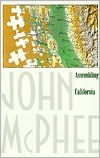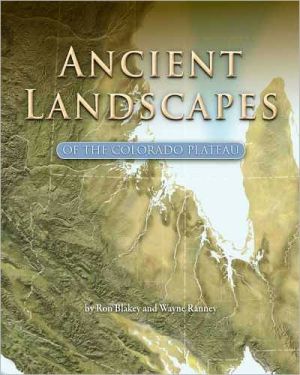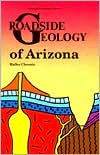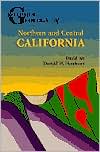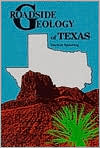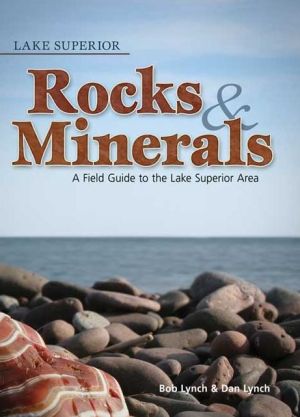Assembling California
At various times in a span of fifteen years, John McPhee has made geological field trips in the company of Eldridge Moores, a tectonicist at the University of California at Davis. The result is Assembling California, a cross-section in human and geologic time, from Donner Pass in the Sierra Nevada through the golden foothills of the Mother Lode and across the Great Central Valley to the wine country of the Coast Ranges, the rock of San Francisco, and the San Andreas family of faults. The two...
Search in google:
A cross-section in human and geologic time, Assembling California is a sweeping narrative of maps, in motion, of evolving and dissolving lands. Publishers Weekly In his usual clean, graceful prose, McPhee takes readers on an intensive geological tour of California, from the Sierra Nevada through wine country to the San Andreas fault system, a 50-mile-wide swath of parallel fault lines. Through talks with his traveling companion, geologist Eldridge Moores, McPhee introduces the reader to current geological controversies, and surveys global plate tectonics--the collision and rearrangement of land masses ever since the breakup of the supercontinent of Pangaea eons ago. The duo also travel to Arizona, where Moores grew up pushing ore carts in his family's gold mine, and to Cyprus and Greece, where rock from the ocean floor has been tossed up to form continents. McPhee looks at the conjectural science of earthquake prediction and gives an account of a recent San Francisco quake. His leisurely excavation meanders from Mexican explorer Juan Bautista de Anza's settlement of San Francisco in 1776 to 1850s gold-mining camps to the summit of Mount Everest, made of marine limestone lifted from a shelf that once divided India and Tibet. With this volume McPhee concludes his Annals of the Former World series, which he began with Basin and Range (1980). Illustrated. (Feb.)
\ You go down through the Ocean View district of San Francisco to the first freeway exit after Daly City, where you describe, in effect, a hairpin turn to head north past a McDonald’s to a dead end in a local dump. It is called the Daly City Scavenger Company. You leave your car and walk north on a high contour some hundreds of yards through deep grasses until a path to your left takes you down a steep slope a quarter of a mile to the ocean. You double back along the water, south to Mussel Rock.\ Mussel Rock is a horse. As any geologist will tell you, a horse is a displaced rock mass that has been caught between the walls of a fault. This one appeared to have got away. It seemed to have strained successfully to jump out of the continent. Or so I thought the first time I was there. It loomed in fog. Green seas slammed against it and turned white. It was not a small rock. It was like a three-story building, standing in the Pacific, with brown pelicans on the roof. You could walk out on a ledge and look up through the fog at the pelicans. When you looked around and faced inland, you saw that you were at the base of a fifty-foot cliff, its lithology shattered beyond identification. A huge crack split the cliff from top to bottom and ran on out through the ledge and under the waves. After a five-hundred-mile northwesterly drift through southern and central California, this was where the San Andreas Fault intersected the sea.\ I went to Mussel Rock that foggy afternoon in 1978 with the geologist Kenneth Deffeyes. I have returned a number of times since, alone or in the company of others. With regard to the lithosphere, it’s a good place to sit and watch the plates move. It is a moment in geography that does your thinking for you. The San Andreas Fault, of course, is not a single strand. It is something like a wire rope, as much as half a mile wide, each strand the signature of one or many earthquakes. Mussel Rock is near the outboard edge of the zone. You cannot really say that on one side of the big crack is the North American Plate and on the other side is the Pacific Plate, but it’s tempting to do so. Almost automatically, you stand with one foot on each side and imagine your stride lengthening—your right foot, say, riding backward toward Mexico, your left foot in motion toward Alaska. There’s some truth in such a picture, but the actual plate boundary is not so sharply defined. Not only is the San Andreas of varying width in its complexity of strands, it is merely the senior fault in a large family of more or less parallel faults in an over-all swath at least fifty miles wide. Some of the faults are to the west and under the ocean; more are inland. Whether the plate boundary is five miles wide or fifty miles wide or extends all the way to central Utah is a matter that geologists currently debate. Nonetheless, there is granite under the sea off Mussel Rock that is evidently from the southern Sierra Nevada, has travelled three hundred miles along the San Andreas system, and continues to move northwest. As evidence of the motion of the plates, that granite will do.\ For an extremely large percentage of the history of the world, there was no California. That is, according to present theory. I don’t mean to suggest that California was underwater and has since come up. I mean to say that of the varied terranes and physiographic provinces that we now call California nothing whatever was there. The continent ended far to the east, the continental shelf as well. Where California has come to be, there was only blue sea reaching down some miles to ocean-crustal rock, which was moving, as it does, into subduction zones to be consumed. Ocean floors with an aggregate area many times the size of the present Pacific were made at spreading centers, moved around the curve of the earth, and melted in trenches before there ever was so much as a kilogram of California. Then, a piece at a time—according to present theory—parts began to assemble. An island arc here, a piece of a continent there—a Japan at a time, a New Zealand, a Madagascar—came crunching in upon the continent and have thus far adhered. Baja is about to detach. A great deal more may go with it. Some parts of California arrived head-on, and others came sliding in on transform faults, in the manner of that Sierra granite west of the San Andreas. In 1906, the jump of the great earthquake—the throw, the offset, the maximum amount of local displacement as one plate moved with respect to the other—was something like twenty feet. The dynamics that have pieced together the whole of California have consisted of tens of thousands of earthquakes as great as that—tens of thousands of examples of what people like to singularize as “the big one”—and many millions of earthquakes of lesser magnitude. In 1914, Andrew Lawson, writing the San Francisco Folio of the Geologic Atlas of the United States, wistfully said, “Most of the faults are the expression of energies that have been long spent and are not in any sense a menace. It is, moreover, barely possible that stresses in the San Andreas fault zone have been completely and permanently relieved by the fault movement of 1906.” Andrew Lawson—who named the San Andreas Fault—was a structural geologist of the first order, whose theoretical conclusions were as revered in his time as others’ are at present. For the next six decades in California, a growing population tended to imagine that the stresses were indeed gone—that the greatest of historic earthquakes (in this part of the fault) had relieved the pressure and settled the risk forever. In the nineteen-sixties, though, when the work of several scientists from various parts of the world coalesced to form the theory of plate tectonics, it became apparent—at least to geologists—that those twenty feet of 1906 were a minuscule part of a shifting global geometry. The twenty-odd lithospheric plates of which the rind of the earth consists are nearly all in continual motion; in these plate movements, earthquakes are the incremental steps. Fifty thousand major earthquakes will move something about a hundred miles. After there was nothing, earthquakes brought things from far parts of the world to fashion California.\ Deffeyes and I had been working in Utah and Nevada, in the physiographic province of the Basin and Range. Now he was about to go east and home, and we wandered around San Francisco while waiting for his plane. Downtown, we walked by the Transamerica Building, with its wide base, its high sides narrowing to a point, and other buildings immensely tall and straight. Deffeyes said, “There are two earthquake-resistant structures—the pyramids and the redwoods. These guys are working both sides of the street.” The skyscrapers were new, in 1978. In an earthquake, buildings of different height would have different sway periods, he noted. They would “creak and groan, skin to skin.” The expansion joints in freeways attracted his eye. He said they might open up in an earthquake, causing roadways to fall. He called the freeways “disposable—Kleenexes good for one blow.” He made these remarks in the shadowy space of Second Street and Stillman, under the elevated terminus of Interstate 80, the beginnings of the San Francisco Skyway, the two-level structure of the Embarcadero Freeway, and so many additional looping ramps and rights-of-way that Deffeyes referred to it all as the Spaghetti Bowl. He said it was resting on a bog that had once surrounded a tidal creek. The multiple roadways were held in the air by large steel Ts. Deffeyes said, “It’s the engineer in a game against nature. In a great earthquake, the ground will turn to gray jello. Those Ts may uproot like tomato stakes. And that will seal everyone in town. Under the landfill, the preexisting mud in the old tidal channel will liquefy. You could wiggle your feet a bit and go up to your knees.” In 1906, the shaking over the old tidal channel that is now under the freeways was second in intensity only to the San Andreas fault zone itself, seven miles away. “Los Angeles, someday, will be sealed in worse than this,” he continued. “In the critical hours after a great earthquake, they will be cut off from help, food, water. Take one piece out of each freeway and they’re through.”\ In a rented pickup, we had entered California the day before, climbing the staircase of fault blocks west of Reno that had led the Donner party to the crest of the mountains named for snow. This was among the first of series of journeys on and near Interstate 80 that I would be making in the company of geologists, for the purpose of describing not only the rock exposed in roadcuts—and the regional geologies into which the roadcuts would serve as windows—but also the geologists themselves. The result was meant to be a sort of cross-section of the United States at about the fortieth parallel, and a picture of the science. The writing would develop as four compositions, of which this is the fourth. The element controlling them—the subject that has shaped the over-all structure—has been plate tectonics. The scientific papers that effected the plate-tectonics revolution were published from 1959 to 1968. Much of what was written there was at first widely scorned. As I started out on my transcontinental journeys, in 1978, I wanted to see how the science was settling down with its new theory, and, as a continuing result of its revelations, what revisions would occur in the consensual biography of the earth. Plenty of other matters would be discussed, but that one was paramount. The developed structure has not been linear—not a straightforward trip from New York to San Francisco on the interstate. It began in New Jersey and then leaped to Nevada, because the tectonics in New Jersey two hundred million years ago are being recapitulated by the tectonics in Nevada today. While the progress was not linear in a geographic sense, thematically it was aimed at California. In California was the prow of the North American Plate—in these latitudes, the sliding boundary. California was also among the freshest acquisitions of the continent. So radical and contemporary were the regional tectonics that the highest and the lowest points in the contiguous United States were within eighty miles of each other in California. As nowhere else along the fortieth parallel in North America, this was where the new theory of plate tectonics was announcing its agenda.\ Over the years, I would crisscross the country many times, revisiting people and places, yet the first morning with Deffeyes among the rocks of California retains a certain burnish, because it exemplified not only how abrupt the transition can be as you move from one physiographic province to another but also the jurisdictional differences in the world of the geologist. As we crossed the state line under a clear sky and ascended toward Truckee, we passed big masses of competent, blocky, beautiful rocks bright in their quartzes and feldspars and peppered with shining black mica. The ebullient Deffeyes said, “Come into the Sierra and commune with the granite.”\ A bend or two later, his mood extending even to the diamond-shaped warnings at the side of the road, he said, “Falling-rock signs are always good news to us.”\ Then a big pink-and-buff roadcut confused him. He said he thought it consisted of “young volcanics,” but preferred to let it remain “mysterious for the moment.” The moment stretched. Deffeyes is as eclectic as a geologist can become, a generalist of remarkable range, but his particular expertise—he wrote his dissertation in Nevada and has done much work there since—was fading in the distance behind him. Up the road was a metasediment in dark and narrow blocks going every which way, like jackstraws. Deffeyes got out of the pickup and put his nose on the outcrop, but he had an easier time identifying a bald eagle that watched him from an overhanging pine.\ “You need a new geologist,” he said to me.\ We took a rock sample, washed our hands in melting snow, and ate a couple of sandwiches as we watched wet traffic with bright headlights come down from Donner Summit. Looking back to the cloudless Basin and Range and seeing what lay ahead for us, Deffeyes said, “Out of the rain shadow, into the rain.”\ After we got up into the high country ourselves, some additional metasediment left him colder than the rain. “The time has come to turn you over to Eldridge Moores,” he said.\ A few miles farther on, we came to a big, gravelly roadcut that looked like an ash fall, a mudflow, glacial till, and fresh oatmeal, imperfectly blended. “I don’t know what this glop is,” he said, in final capitulation. “You need a new geologist. You need a Californian.”\ Copyright © 1993 by John McPhee
\ Publishers Weekly - Publisher's Weekly\ In his usual clean, graceful prose, McPhee takes readers on an intensive geological tour of California, from the Sierra Nevada through wine country to the San Andreas fault system, a 50-mile-wide swath of parallel fault lines. Through talks with his traveling companion, geologist Eldridge Moores, McPhee introduces the reader to current geological controversies, and surveys global plate tectonics--the collision and rearrangement of land masses ever since the breakup of the supercontinent of Pangaea eons ago. The duo also travel to Arizona, where Moores grew up pushing ore carts in his family's gold mine, and to Cyprus and Greece, where rock from the ocean floor has been tossed up to form continents. McPhee looks at the conjectural science of earthquake prediction and gives an account of a recent San Francisco quake. His leisurely excavation meanders from Mexican explorer Juan Bautista de Anza's settlement of San Francisco in 1776 to 1850s gold-mining camps to the summit of Mount Everest, made of marine limestone lifted from a shelf that once divided India and Tibet. With this volume McPhee concludes his Annals of the Former World series, which he began with Basin and Range (1980). Illustrated. (Feb.)\ \ \ \ \ Library JournalWith this work McPhee completes his book series on regional geology in the United States. The author of more than 20 works on a wide range of topics ( Looking for a Ship , LJ 8/90; The Control of a Nature , LJ 4/1/89), he has a talent for relating complex concepts in a simple, interesting manner. McPhee spent portions of 15 years traveling world-wide with geologist Eldridge Moores in search of supporting evidence for the theory that California moved on shifting plates (continental drift) to become affixed to North America. He also discusses the history of mining in the state and offers sobering implications for those living near the San Andreas fault complex. Although portions of this book may be beyond the scope of the average reader, it should appeal to armchair scientists, rockhounds, and fans of McPhee's other works. Recommended for larger public as well as academic collections. Previewed in Prepub Alert, LJ 9/1/92.-- Tim Markus, Evergreen State Coll. Lib., Olympia, Wash.\ \ \ Kirkus ReviewsThe final entry in McPhee's four-volume hymn to geology, known collectively as Annals of the Former World (most recently Rising from the Plains, 1986). Most of this volume appeared previously in The New Yorker. McPhee again displays his talent for explaining, without denaturing, technical matters that could make most heads reel. This time, he and geologist Eldridge Moores clamber around California and the Southwest, with junkets to Macedonia and Cyprus, to observe how the earth as we know it came to be. The investigation spans years; as it proceeds, McPhee makes geological obscurities simple and geological grotesqueries lovely. We see how pieces of earth fused to form California; among other things, this book is a Festschrift for the theory of continental drift—the idea that chunks of earth separate or collide, creating continents, mountain chains, gulfs. Moores reads road cuts like thumbprints; near the Donner Pass, he spots the outcropping of a quadrillion-ton chunk of granite humped under California. The 1848 California gold rush is detailed, a period when human time (measured in lifetimes) and geological time (measured in eons) conjoined, and yellow nuggets the size of shoe boxes fell out of streams. McPhee muses much on these two time streams, which also merge in the terror of earthquakes. The book's finest passage is a step-by-step retelling, as if in slow-motion, of the 1989 San Francisco earthquake, hideous in its eeriness ("In Asbury Heights, a man is watering his patch of grass. He suddenly feels faint, his knees weaken, and his front lawn flutters like water under wind") but doing nothing to postpone the dreaded Big One To Come. McPhee's overall lesson? That history isthe bridesmaid of geology—and that the earth is a prankster. The author offers this wonderful testimony to the weirdness of plate tectonics: "The summit of Mt. Everest is marine limestone." Intolerable if one has no taste for mysteries beneath the soil; otherwise, riveting.\ \
